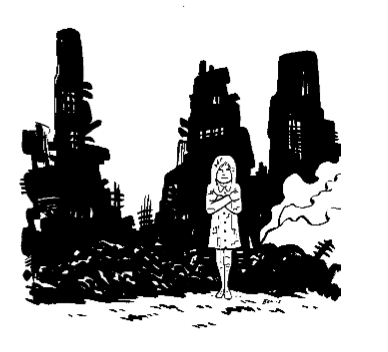According to my Jane’s Fighting Aircraft of World War II, RAF Bomber Command dropped 45,517 British tons (2,240 pounds) of bombs on Berlin, 36,420 tons in Essen, 34,711 tons on Cologne,1 and (as Kurt Vonnegut kept saying in Slaughterhouse-Five) so it goes.
Like Vonnegut, I remain especially haunted by the incineration of Dresden on February 13-14, 1945. Fifty thousand people were killed. I have been told by older Germans, rightly or wrongly I don’t know, that the second wave of planes, the American B-17 bombers, machine-gunned more civilians as they went through. At any rate, this raid eventually discomfited even Winston Churchill. Dresden hangs over me almost as balefully as Auschwitz and Leningrad as I finish writing my collection of short stories set largely in Germany and Russia during World War II. (If the book has a protagonist, it would be Shostakovich, whose Eighth String Quartet [1960] was composed in the course of a visit to the ruins of Dresden. That piece of music is one of the saddest and angriest ever written.)
“Horror” is an inadequate description of what occurred in Dresden, because the horror is almost over now. The broken churches, the roasted children, the black skeletons in their sometimes strangely unburned Nazi uniforms exist in the memories of those who survived, but in a few more decades at most those rememberers and their trauma will all be dead. But when the horror is buried, the loss will remain. Page through any picture-book of Dresden as it used to be, and you’ll see how beautiful the city once was. I happen to own a very thick volume of such photographs, and it never ceases to shock me how many images are captured with such helpful indicators as “1945 zerstört,” or sometimes, more pedantically, “1945 zerstört, später abgebrochen”—“1945 destroyed, later demolished.”2
Thus Dresden, and Dresden was but one inferno of many. Multiply Dresden by Nuremberg, Berlin and their kindred German cities sacrificed to the war, and the magnitude of this atrocity begins to emerge—or was it an atrocity? Did the laws of war somehow legitimize it?
In a posthumous collection of essays, entitled On the Natural History of Destruction, W.G. Sebald reminds us that “the majority of Germans today know, or so at least it is to be hoped, that we actually provoked the annihilation of the cities in which we once lived” (p. 103). And obviously World War II was to a great extent Hitler’s war,3 fought with Hitler’s methods. To what extent World War II was, however, a German war remains less clear. On 31 August 1939, a prominent American journalist in...
You have reached your article limit
Sign up for a digital subscription and continue reading all new issues, plus our entire archives, for just $1.50/month.
Already a subscriber? Sign in





